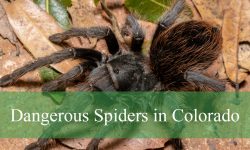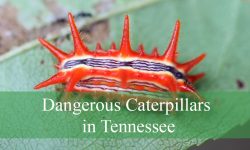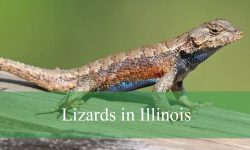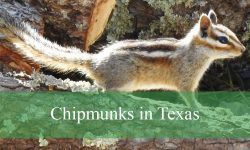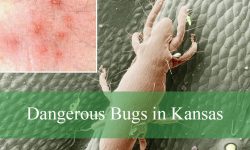Nevada’s arid deserts and rugged mountains provide a home for a remarkable variety of lizards. These reptiles have evolved unique adaptations that allow them to thrive in extreme conditions, from scorching heat to rocky terrain.
With their striking patterns, fascinating behaviors, and ecological importance, lizards across Nevada contribute to the balance of local ecosystems. They help control insect populations and serve as prey for larger wildlife.
Exploring the lizards of Nevada reveals the resilience and diversity of desert life. From the tiny geckos clinging to walls at night to the iconic Gila Monster, each species adds to the state’s natural richness.
Different Types of Lizards Found in Nevada
Western Whiptail (Aspidoscelis tigris)
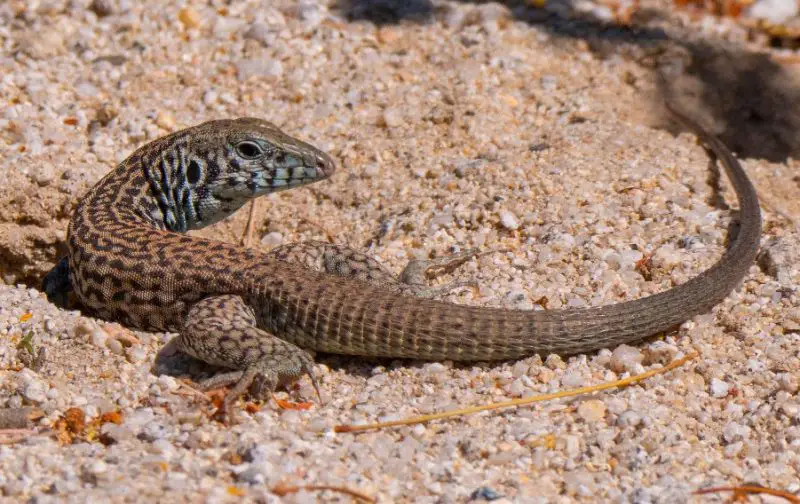
The Western Whiptail is one of the most common lizards in Nevada, thriving in desert valleys, rocky areas, and open shrublands. This slender, fast-moving reptile is characterized by its long tail, which can be more than twice the length of its body, giving it a whip-like appearance. Its coloration is generally brown or gray with faint spots or stripes, which helps it blend into sandy and rocky terrain.
Behaviorally, Western Whiptails are extremely active during the day, constantly darting around in search of food. They are insectivorous, feeding primarily on ants, beetles, grasshoppers, and spiders. Their quick movements and agility allow them to evade predators effectively, although their tails are frequently shed and regrown as a survival mechanism.
Habitat preference is wide-ranging, making them highly adaptable across Nevada’s varied landscapes. They can be found from low desert basins to higher elevations where shrubs and rocks provide shelter. Their ability to tolerate high temperatures gives them a distinct advantage in harsh desert environments.
Western Whiptails play an important role in the ecosystem as natural pest controllers, keeping insect populations in check. They also serve as prey for birds, snakes, and mammals, making them a key link in the food web. Their abundance makes them one of the most frequently seen lizards across the state.
Common Side-blotched Lizard (Uta stansburiana)
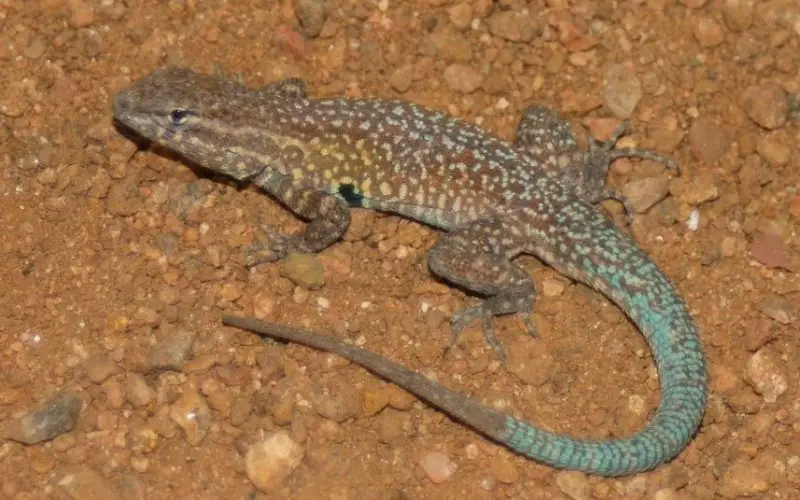
The Common Side-blotched Lizard is small in size but abundant across Nevada’s deserts and rocky slopes. It is easily identified by the distinct dark blotch found just behind its front limbs, which gives the species its name. Their coloration varies from sandy brown to gray, often matching the soil and rocks around them for camouflage.
These lizards are well known for their territorial behavior and complex social dynamics. Males often engage in head-bobbing displays and posturing to defend territories and attract mates. Interestingly, this species shows color polymorphism in males, with different throat colors linked to different mating strategies.
Their diet consists mainly of small insects such as ants, flies, and termites. Due to their small size, they are vulnerable to many predators, including birds, snakes, and larger lizards. However, their agility and ability to blend into the landscape give them a survival edge.
Because of their wide distribution and adaptability, Side-blotched Lizards are among the most frequently encountered reptiles in Nevada. They can survive in arid conditions with limited vegetation and are often spotted scurrying across open desert ground.
Western Fence Lizard (Sceloporus occidentalis)
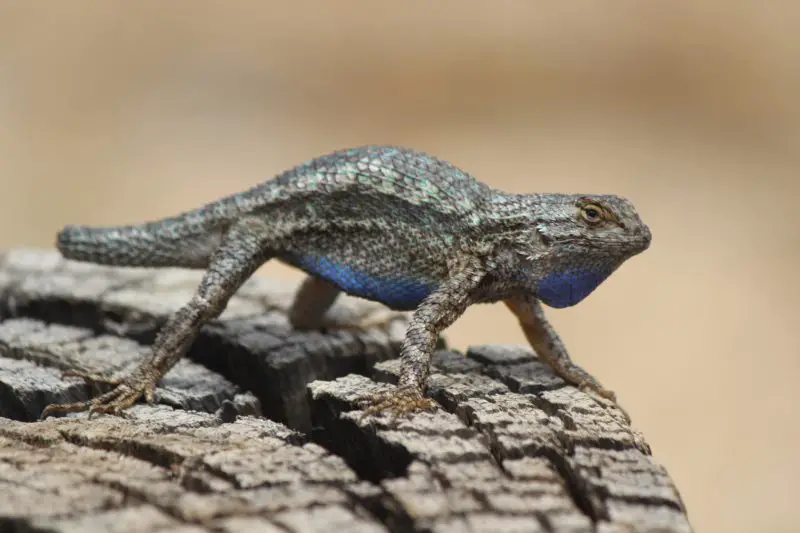
The Western Fence Lizard, also known as the “blue-belly” lizard, is common throughout Nevada’s foothills, woodlands, and rocky deserts. It is named for the vivid blue coloration found on the sides of the belly and throat, especially in males. Their backs are covered with rough, keeled scales, giving them a spiny appearance.
Behaviorally, these lizards are basking specialists, often seen sunning themselves on rocks, logs, and fences. They are diurnal and spend much of their time regulating their body temperature in the sun. Their quick reflexes make them difficult to catch, as they can dart into crevices at the first sign of danger.
Their diet is largely insectivorous, consisting of beetles, flies, ants, and caterpillars. By feeding on ticks, they play an indirect role in reducing Lyme disease risks, as the lizard’s blood contains proteins that kill Lyme-causing bacteria in ticks. This unique ecological benefit sets them apart from many other reptiles.
Western Fence Lizards thrive in diverse environments across Nevada, from pine forests to desert edges. Their adaptability and recognizable blue markings make them one of the most easily identified and widely seen lizards in the state.
Yellow-backed Spiny Lizard (Sceloporus uniformis)
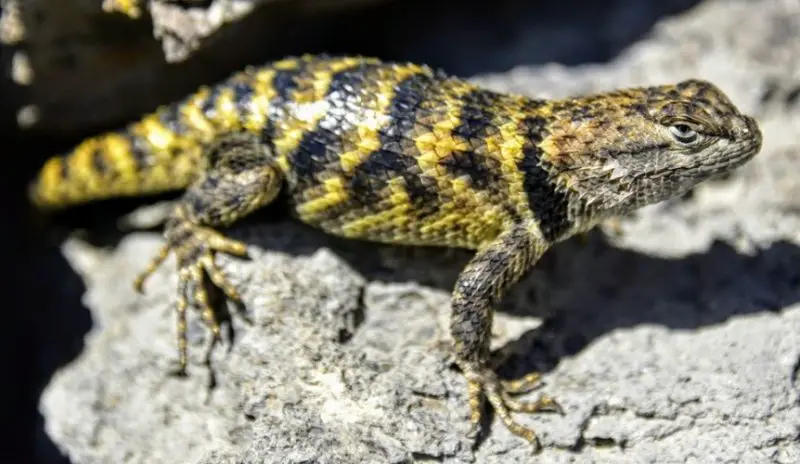
The Yellow-backed Spiny Lizard is a medium to large lizard often found in desert regions and rocky areas of Nevada. Its most distinctive feature is the yellowish or golden coloration along its back, which contrasts with the dark, spiny scales that cover its body. This textured appearance provides both protection and camouflage.
These lizards are active during the day, especially in the morning and late afternoon when temperatures are moderate. They are wary and quick to escape, often retreating into crevices when approached. Males display territorial behavior through head-bobbing and push-up displays, which also highlight their vibrant colors.
Their diet is mainly composed of insects and spiders, but they may also consume small vertebrates if the opportunity arises. Like other spiny lizards, they are well adapted to dry conditions, obtaining much of their water from food. Their powerful limbs and claws allow them to climb rocks and shrubs with ease.
In Nevada, they are commonly found in arid landscapes, particularly where rocky outcrops and sparse vegetation provide both basking spots and hiding places. Their striking coloration makes them stand out more than other species, though they remain cautious and quick to flee from predators.
Desert Horned Lizard (Phrynosoma platyrhinos)
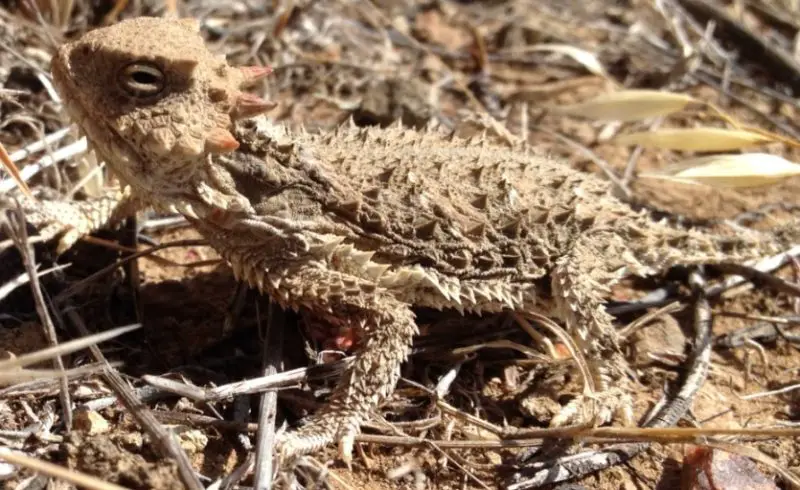
The Desert Horned Lizard, often called a “horned toad,” is a well-known reptile of Nevada’s deserts. Its flat, broad body and crown of horn-like spines on the head make it one of the most distinctive lizards in the state. Its coloration is usually sandy brown or gray, blending perfectly with desert soils.
Unlike the speedy whiptails and fence lizards, the Desert Horned Lizard relies on stillness and camouflage to avoid predators. When threatened, it may puff up its body to appear larger, or in rare cases, squirt blood from its eyes as a defense mechanism. This unique behavior makes it one of the most fascinating lizards in North America.
Their diet primarily consists of ants, especially harvester ants, though they will eat other small insects as well. Their specialized feeding habits make them highly dependent on areas where ant colonies are abundant.
The Desert Horned Lizard is commonly found in open desert flats, sandy washes, and rocky foothills across Nevada. Their unusual appearance and unique defenses make them a favorite among wildlife observers, though they are best admired in the wild rather than collected.
Long-nosed Leopard Lizard (Gambelia wislizenii)
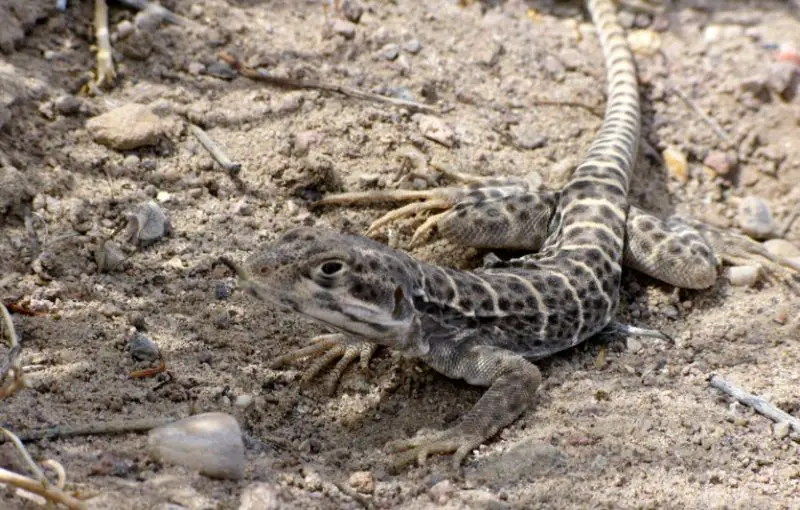
The Long-nosed Leopard Lizard is one of the larger lizards found in Nevada, easily identified by its long, slender snout and the bold leopard-like spots scattered across its body. Its coloration ranges from pale gray to light brown, with darker markings that provide camouflage against desert terrain. The tail is long and powerful, often used for balance when sprinting.
This species is diurnal and highly active during the hottest parts of the day, especially in open desert flats. They are agile hunters, capable of short bursts of speed to catch prey. Unlike many smaller insectivorous lizards, they consume not only insects but also other lizards and even small rodents when available.
Leopard lizards are known for their territorial behavior and can be seen basking on rocks or sandy ground. They use their long limbs to cover ground quickly, making them difficult to capture. During the breeding season, females often develop reddish or orange markings along their sides.
In Nevada, they are found in desert basins, rocky foothills, and sagebrush habitats. Their large size and striking spotted pattern make them one of the more dramatic and memorable reptiles of the state’s arid regions.
Desert Iguana (Dipsosaurus dorsalis)
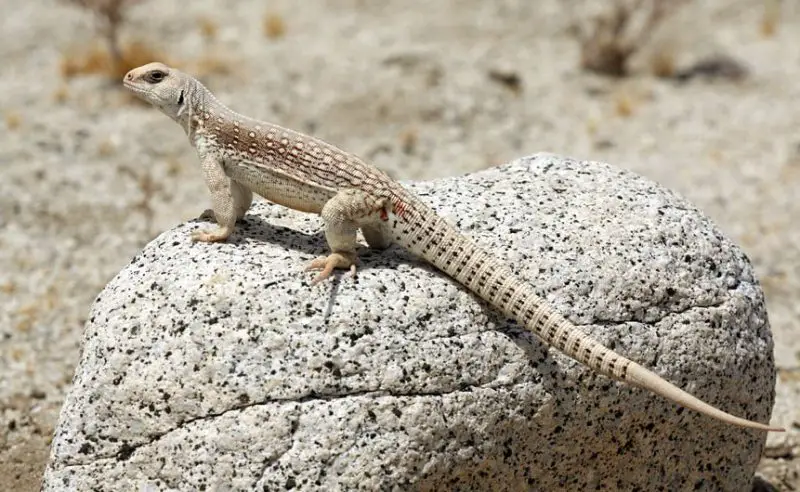
The Desert Iguana is a medium-sized lizard well adapted to Nevada’s extreme desert climate. It has a pale gray or light brown body with faint reticulated patterns and a long, rounded tail. Its light coloration helps reflect sunlight, making it well suited to survive in hot, sandy environments.
Primarily herbivorous, Desert Iguanas feed on leaves, flowers, and fruits of desert plants, particularly creosote bush. They also occasionally consume insects, but vegetation makes up most of their diet. Their reliance on desert plants ties them closely to specific habitats across southern Nevada.
These iguanas are most active during the hottest parts of the day, often seen basking on open ground when other lizards seek shade. They quickly retreat into burrows when disturbed, where they remain safe from predators and extreme heat.
In Nevada, Desert Iguanas are commonly found in sandy desert flats and rocky washes of the Mojave Desert. Their daytime activity and preference for open areas make them easier to spot compared to more secretive species.
Great Basin Collared Lizard (Crotaphytus bicinctores)
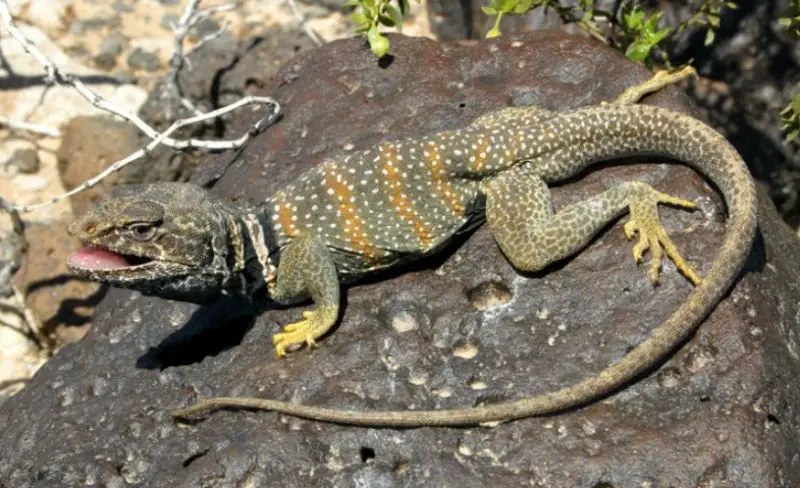
The Great Basin Collared Lizard is a striking reptile recognized by the two bold black bands around its neck that resemble a collar. It is a medium-to-large lizard with a robust body, long tail, and strong limbs. Coloration can vary, but individuals often display gray, brown, or green tones with scattered spots.
These lizards are diurnal and highly active hunters, feeding on insects, spiders, and even smaller lizards. Their powerful jaws and speed make them efficient predators in Nevada’s arid landscapes. Males often show brighter colors during the breeding season, making them more noticeable.
Collared lizards are often seen basking on rocks, where they maintain lookout positions. They are capable of running on their hind legs for short distances, a behavior that makes them unique among Nevada’s reptiles. This adaptation allows them to chase prey or escape threats rapidly.
They inhabit rocky outcrops, desert basins, and shrublands across Nevada, particularly in the Great Basin region. Their bold collar markings and energetic behavior make them an exciting species to observe in the wild.
Common Sagebrush Lizard (Sceloporus graciosus)
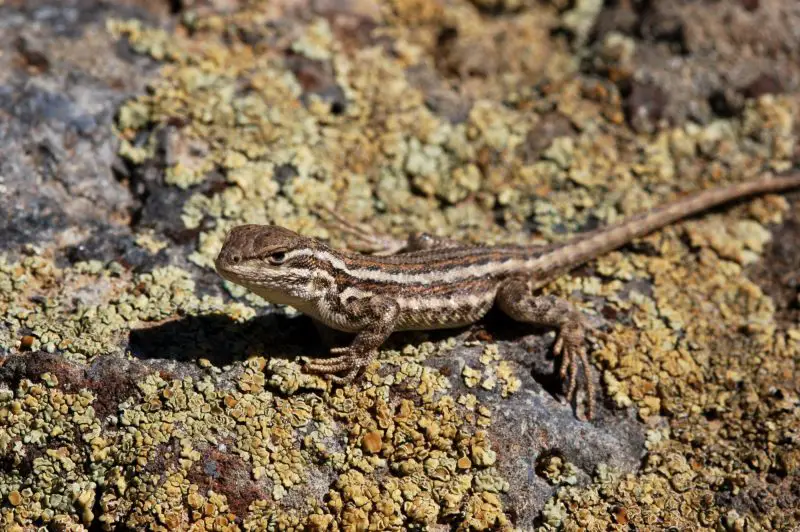
The Common Sagebrush Lizard is a small reptile frequently found in sagebrush habitats throughout Nevada. It is covered in rough, spiny scales and typically exhibits a grayish-brown coloration with darker crossbands that help it blend into dry shrubland environments. Males may have blue patches on their bellies during the breeding season.
Sagebrush Lizards are active during the day and spend much of their time basking on rocks, logs, and bare ground. They are quick and agile, often darting into shrubs or burrows when threatened. Their diet is composed primarily of small insects such as ants, beetles, and grasshoppers.
These lizards are well adapted to colder climates compared to some of Nevada’s desert species, allowing them to thrive in higher elevations where sagebrush dominates. They hibernate during the winter months, emerging in spring to feed and breed.
Their abundance in sagebrush ecosystems makes them an important part of Nevada’s biodiversity. They provide food for snakes and birds, while also controlling insect populations in their habitats.
Common Chuckwalla (Sauromalus ater)
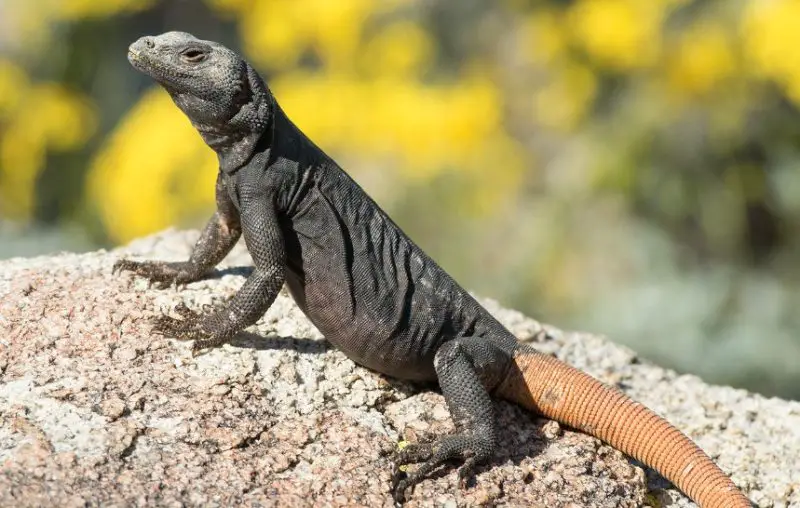
The Common Chuckwalla is one of the largest lizards in Nevada, reaching up to 15 inches in body length with a thick, stocky build and a blunt-tipped tail. Its coloration is variable, often gray or brown with darker blotches, allowing it to blend into rocky desert landscapes. Its loose, baggy skin and heavy body distinguish it from other local lizards.
Unlike many predatory lizards, Chuckwallas are herbivores, feeding primarily on leaves, flowers, and fruits of desert plants. They rely on these plant-based diets for both food and water, making them highly adapted to arid conditions.
Chuckwallas are often seen basking on large rocks, soaking up heat before retreating into crevices at the first sign of danger. When threatened, they wedge themselves tightly into rock cracks and inflate their bodies, making it nearly impossible for predators to extract them.
In Nevada, they are found in rocky desert areas of the Mojave Desert. Their size, unique appearance, and behavior make them a fascinating species for wildlife enthusiasts, though they are more secretive compared to smaller, faster lizards.
Ornate Tree Lizard (Urosaurus ornatus)
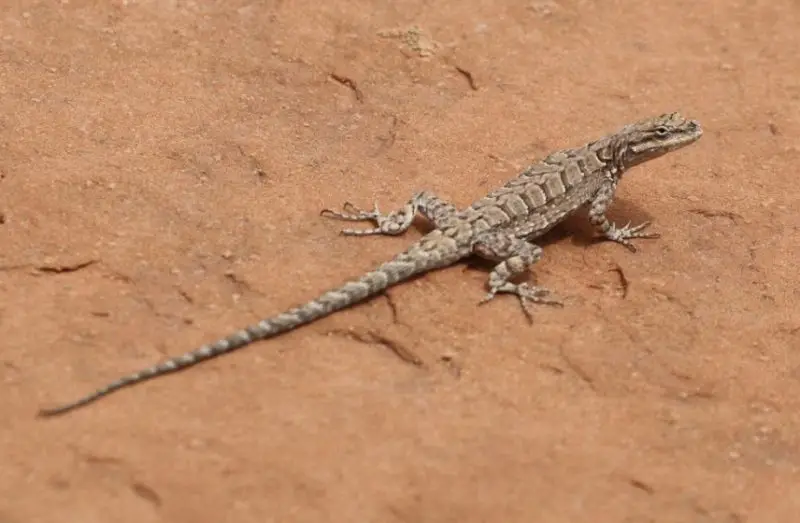
The Ornate Tree Lizard is a small, slender species found in southern Nevada, often in rocky deserts and urban areas. It typically measures just a few inches in length, with a long tail and fine scales. Its coloration ranges from brown to gray, with dark crossbands and small blotches that help it camouflage among rocks and trees. Males often display bright blue patches on their throats and bellies, especially during breeding season.
These lizards are diurnal and highly active, frequently seen basking on rocks, fences, and walls. They are insectivores, feeding on ants, beetles, and other small arthropods. Their small size and quick movements allow them to exploit a wide range of habitats, including areas near human dwellings.
During the breeding season, males become territorial and use head-bobbing or push-up displays to warn off rivals. Their bright coloration is most vivid during this time, signaling health and dominance to potential mates.
In Nevada, Ornate Tree Lizards are most common in the southern desert regions. Their adaptability allows them to thrive even in disturbed environments, making them a frequent sight in both natural and urban landscapes.
Western Banded Gecko (Coleonyx variegatus)
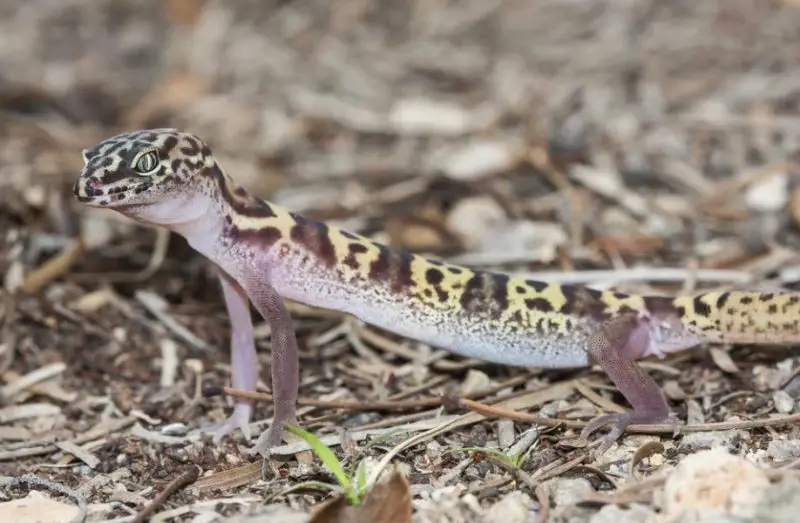
The Western Banded Gecko is a small, nocturnal lizard that inhabits the deserts of Nevada. Unlike many of the state’s diurnal reptiles, this gecko is active at night, emerging after sunset to hunt for insects and spiders. It is easily identified by its soft, granular skin, slender body, and distinct dark bands across its pale background.
One of the most notable features of this gecko is its ability to drop its tail as a defense mechanism. The wriggling tail distracts predators, giving the lizard a chance to escape. Over time, the tail regenerates, though it never fully matches the original appearance.
Western Banded Geckos are insectivorous and often found near rocks, shrubs, and sandy washes. They use their large eyes and vertical pupils to see in low-light conditions, making them well suited for a nocturnal lifestyle.
In Nevada, they are most commonly encountered in the Mojave Desert region. Their secretive, night-active habits mean they are not as frequently seen as diurnal lizards, but with a flashlight, observers can sometimes spot them hunting after dark.
Mediterranean House Gecko (Hemidactylus turcicus)
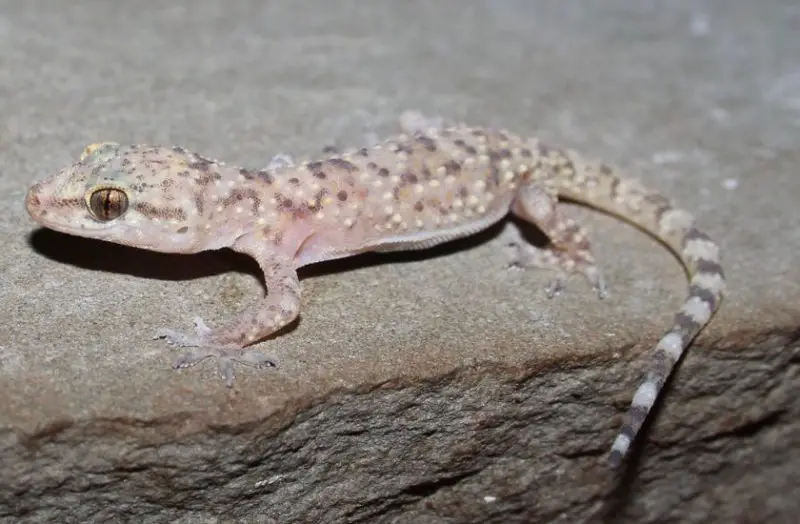
The Mediterranean House Gecko is an introduced species that has established populations in parts of Nevada, particularly in urban and suburban areas. Originally from the Mediterranean region, this small gecko has adapted well to human structures, often seen clinging to walls and ceilings near outdoor lights.
It is easily identified by its translucent, pale pinkish or gray body and large eyes with vertical pupils. Unlike many native lizards, it has sticky toe pads that allow it to climb vertical surfaces, making it well suited for life around buildings.
Mediterranean House Geckos are nocturnal hunters, feeding on moths, flies, and other insects attracted to artificial lights. Their presence near homes and businesses often goes unnoticed, but they provide natural pest control.
Although not native, they are not considered invasive or harmful in Nevada. Instead, they coexist with native reptiles and are primarily seen in areas with significant human activity.
Desert Night Lizard (Xantusia vigilis)
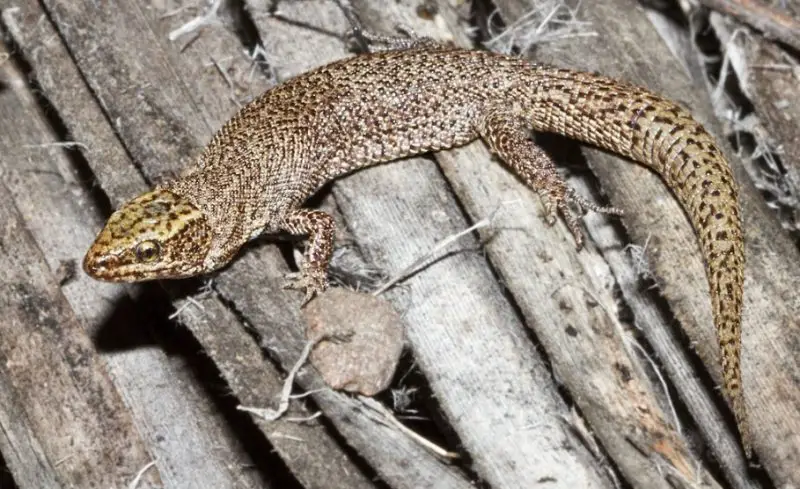
The Desert Night Lizard is a small, secretive species often hidden beneath rocks, logs, or fallen branches. Despite its name, it is not strictly nocturnal and can be active during the day, especially in shaded areas. Its coloration is typically gray or brown with small speckled markings, allowing it to blend into desert soils.
Unlike many other Nevada lizards, Desert Night Lizards are not fast runners. Instead, they rely on a secretive lifestyle, spending much of their time beneath cover. They feed on small insects, spiders, and occasionally plant matter.
One of their unique traits is that they give birth to live young instead of laying eggs. This adaptation allows them to reproduce successfully in environments where soil conditions make egg-laying difficult.
In Nevada, they are found in desert scrublands, often associated with areas containing Joshua trees or fallen woody debris. Because of their elusive habits, they are rarely seen by casual observers, even though they may be locally common.
Zebra-tailed Lizard (Callisaurus draconoides)
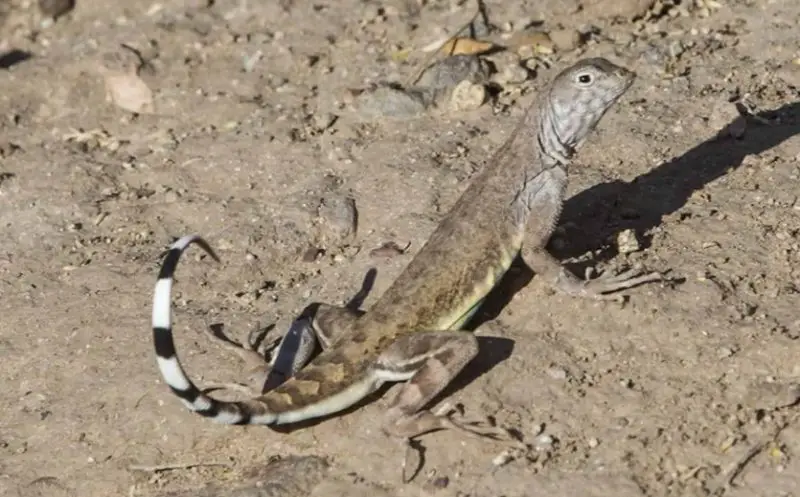
The Zebra-tailed Lizard is a highly active species easily recognized by the bold black and white bands on the underside of its tail. When fleeing from predators, it raises its tail in an arched position, flashing the striped pattern as a distraction. Its body is slender, with a pale gray or sandy color that blends into desert habitats.
This lizard is among the fastest runners in Nevada, capable of sprinting across open desert ground with incredible speed. It often pauses to wag its tail, a behavior thought to confuse predators or signal territory. Its long limbs and streamlined body make it well adapted to life in open, sandy environments.
Zebra-tailed Lizards are insectivorous, feeding on ants, beetles, grasshoppers, and other small arthropods. Their high activity levels require frequent feeding, and they are often seen darting across desert flats during the hottest parts of the day.
They are most common in southern Nevada’s sandy deserts and dry washes. Their distinctive behavior and bold tail markings make them one of the most entertaining reptiles to observe in the field.
Gila Monster (Heloderma suspectum)
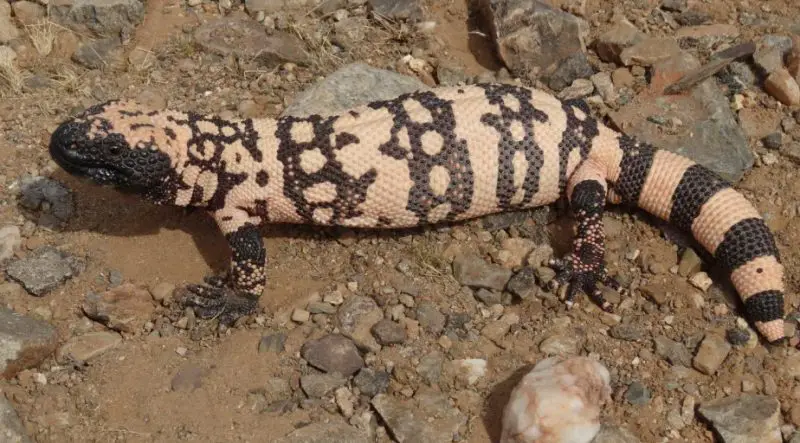
The Gila Monster is one of the most remarkable reptiles in Nevada and the only venomous lizard native to the United States. It is large and heavy-bodied, reaching up to 22 inches in length, with a distinctive bead-like skin patterned in black and pink or orange. Its striking appearance makes it unmistakable compared to any other Nevada lizard.
Unlike most lizards in the state, the Gila Monster is slow-moving and spends much of its life hidden underground. It emerges mainly during spring and early summer, when it feeds and mates. Despite its venomous bite, it is generally docile and not aggressive toward humans unless provoked.
The diet of the Gila Monster includes bird eggs, small mammals, reptiles, and carrion. It stores fat in its tail, which allows it to go long periods without food. Its venom is used to subdue prey, and interestingly, research on its saliva has contributed to diabetes medication development.
In Nevada, Gila Monsters are rare and found only in the extreme southern deserts, particularly in rocky and scrubby areas near the Arizona border. They are protected by law, making it illegal to capture or harm them.
Western Skink (Plestiodon skiltonianus)
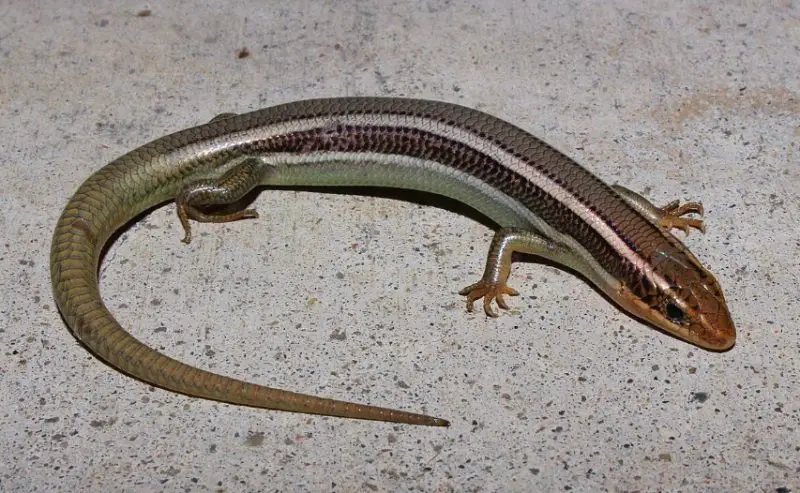
The Western Skink is a sleek, smooth-scaled lizard often recognized by its shiny appearance and bright blue tail in juveniles. Adults have more subdued coloration, usually brown or gray with faint stripes running along the body. Their slender bodies and smooth scales give them a polished look compared to rough-scaled species like spiny lizards.
These skinks are secretive and prefer to remain hidden under rocks, logs, or leaf litter. They are quick to flee when disturbed, making them difficult to observe in the wild. Their bright tails act as decoys, attracting predator attacks away from the body, and they can regenerate lost tails over time.
Western Skinks feed primarily on insects, spiders, and other small invertebrates. They are most active during warm months, spending much of their time foraging in shaded or partially covered areas where soil moisture is higher than in open desert flats.
In Nevada, they are found in foothills, grasslands, and rocky slopes, particularly in the western parts of the state. Their elusive nature makes them less commonly seen, but they are widespread in suitable habitats.
Gilbert’s Skink (Plestiodon gilberti)
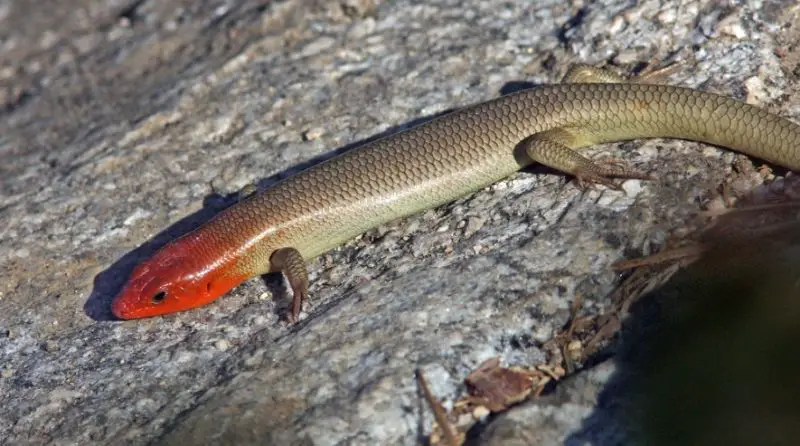
Gilbert’s Skink is another member of the skink family found in Nevada, larger and stockier than the Western Skink. Adults can reach up to 12 inches in total length, with smooth, glossy scales and a pattern that varies from stripes in juveniles to more uniform brown or olive coloration in adults. Juveniles often have bright blue tails similar to other skinks.
This species is highly secretive, spending much of its life underground or beneath surface cover such as rocks and logs. Because of this behavior, it is rarely seen by casual observers, despite being locally common in certain areas.
Gilbert’s Skink feeds on a variety of insects, spiders, and small invertebrates. Its strong jaws allow it to tackle larger prey compared to smaller lizard species. Breeding season occurs in spring and early summer, with females guarding their eggs until hatching.
In Nevada, they are typically found in the western and southern parts of the state, especially in grasslands, shrublands, and foothills. Their secretive lifestyle means sightings are uncommon, but they play an important role in controlling insect populations.
Mojave Fringe-toed Lizard (Uma scoparia)
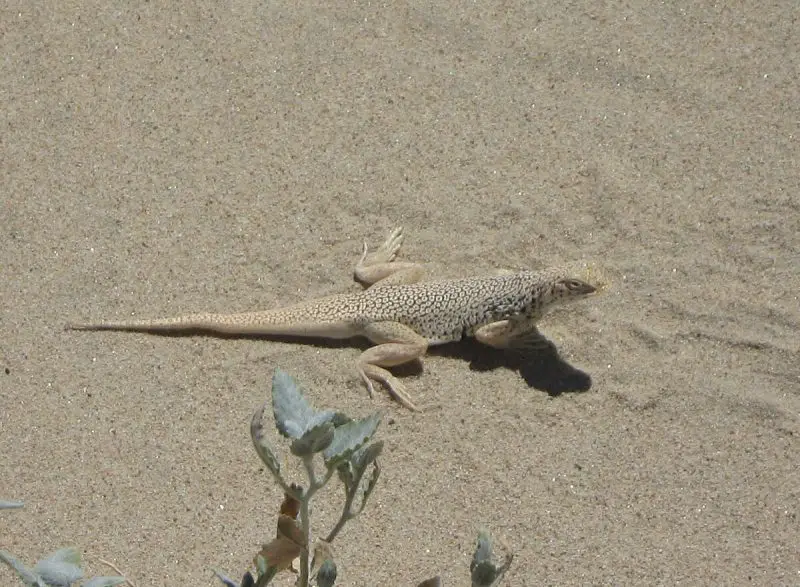
The Mojave Fringe-toed Lizard is a specialized desert species perfectly adapted to sandy environments. Its body is pale, often nearly white with darker flecks, providing excellent camouflage against shifting desert sands. A key feature is the presence of elongated scales, or “fringes,” on the sides of its toes, which help it run across soft sand without sinking.
These lizards are diurnal and most active during the hottest parts of the day. They are fast runners and often dive into loose sand to escape predators, using a unique swimming motion with their bodies. This sand-burrowing ability allows them to cool off and remain hidden.
Their diet includes insects such as ants, beetles, and grasshoppers, along with occasional plant material. They rely heavily on sandy desert ecosystems, making them more habitat-restricted than many other Nevada lizards.
In Nevada, they are found in the Mojave Desert, especially in areas with extensive sand dunes and washes. Their fascinating adaptations make them one of the most specialized and unique lizards in the state’s desert landscapes.
Long-tailed Brush Lizard (Urosaurus graciosus)
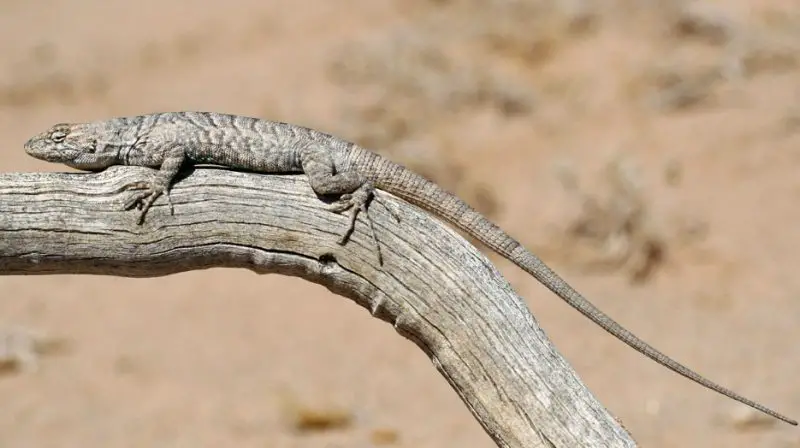
The Long-tailed Brush Lizard is a slender, agile species found in Nevada’s desert habitats. As its name suggests, it has an exceptionally long tail, often more than twice the length of its body, which helps it balance while climbing. Its body is typically gray or brown with fine speckling that blends seamlessly into desert shrubs and sandy soils.
This lizard is highly arboreal compared to other Nevada species, often perching on creosote bushes and other desert plants. Its long tail and slender body allow it to move quickly among twigs and branches, where it hunts for insects. It is most active during the day, basking in the sun before darting off in pursuit of prey.
Breeding season occurs in late spring, with males defending territories using head-bobs and quick displays. Their subtle coloration makes them difficult to spot unless they move, but once observed, their elongated form is distinctive.
In Nevada, the Long-tailed Brush Lizard is most common in the southern desert regions. It thrives in areas with dense desert vegetation, where it can climb and remain hidden from predators.
Desert Spiny Lizard (Sceloporus magister)
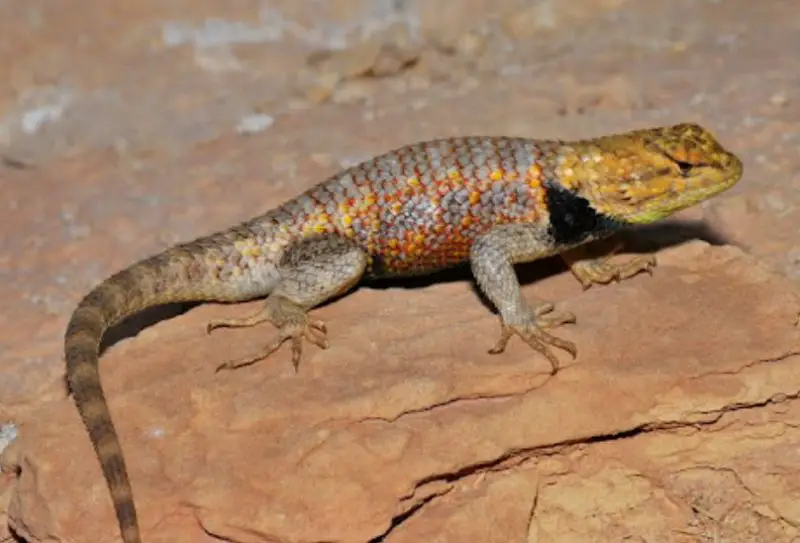
The Desert Spiny Lizard is a large, rough-scaled species commonly found in Nevada’s desert regions. Its body is covered in spiny, keeled scales that give it a rough texture. Coloration is typically gray or brown with darker crossbands, but males may develop striking blue and turquoise patches on their throats and bellies.
These lizards are diurnal and spend much of their time basking on rocks, fences, or desert vegetation. They are ambush predators, feeding on insects, spiders, and other small arthropods. Their spiny appearance and large size make them one of the most easily recognized lizards in the region.
During the breeding season, males become territorial and display vivid coloration to attract females. They often engage in push-up displays and aggressive encounters with rivals.
In Nevada, Desert Spiny Lizards are most common in southern desert habitats. Their adaptability allows them to live near both natural landscapes and human developments, making them a frequent sight in urban desert areas.
Keeled Rock Gecko (Cyrtopodion scabrum)
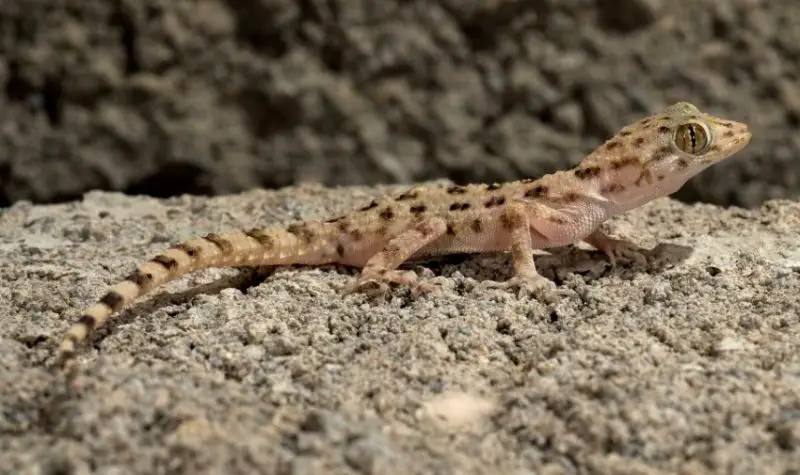
The Keeled Rock Gecko is a small to medium-sized gecko species originally native to regions of the Middle East and South Asia, but it has also been introduced to parts of the southwestern United States, including Nevada. It has adapted well to rocky landscapes, urban areas, and buildings, where it can often be spotted clinging to walls in search of insects. Its body is slender, with a long tail, and the scales have a distinctive keeled or ridged texture, giving it a rough appearance.
This gecko is typically light brown or gray with darker spots and mottling that help it camouflage against rocky surfaces and concrete walls. Unlike some other geckos, the Keeled Rock Gecko is less vibrant in color, but its rugged pattern provides excellent concealment from predators. Its toes are not as adhesive as those of house geckos, so it prefers rough surfaces that provide good grip.
Nocturnal in behavior, this gecko comes out at night to hunt for small insects such as ants, beetles, and moths. During the day, it retreats to crevices in rocks, under debris, or in cracks along walls. Its shy nature makes it difficult to spot in daylight, but nighttime observations near artificial lights often reveal them feeding on insects attracted to the glow.
The Keeled Rock Gecko thrives in desert climates and is well-adapted to arid conditions. In Nevada, it is more commonly found around human dwellings, making it an unusual but established non-native resident of the state’s lizard population. Its ability to survive in urban areas gives it an advantage over some native species.
Greater Short-horned Lizard (Phrynosoma hernandesi)
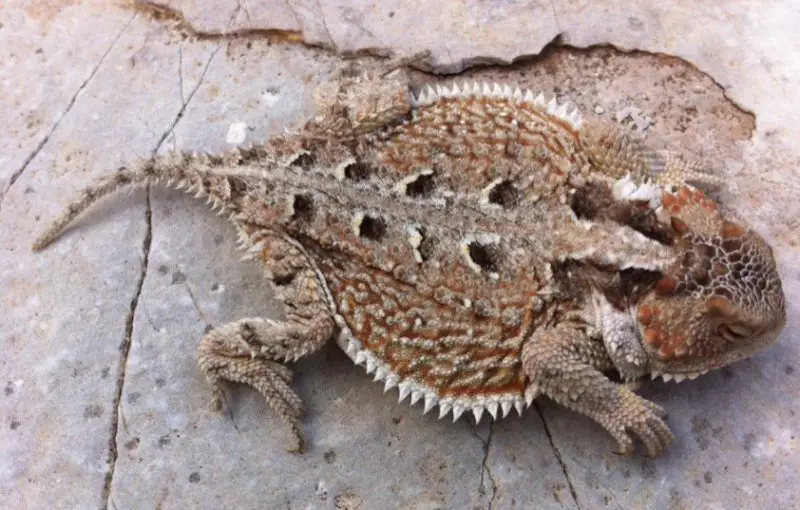
The Greater Short-horned Lizard is a distinctive reptile easily recognized by its broad, flat body and the crown of short but sharp horns atop its head. Found in various habitats across the western United States, including parts of Nevada, it is well-suited to rocky plains, grasslands, and desert foothills. Its unique body shape and defensive traits make it one of the most fascinating lizards in the region.
Its coloration blends perfectly with the soil and rocks of its environment, ranging from grayish brown to reddish hues. This camouflage helps the lizard remain undetected by predators such as snakes and birds of prey. The rough texture of its skin, combined with darker spots and stripes, enhances its ability to stay hidden in open landscapes.
One of the most remarkable defense mechanisms of the Greater Short-horned Lizard is its ability to squirt blood from its eyes when threatened by predators. This unusual behavior, combined with its sharp horns, makes it a difficult target for attackers. It also flattens its body against the ground to appear like part of the terrain.
This lizard primarily feeds on ants, especially harvester ants, though it will also consume other small insects. Its distribution in Nevada is generally limited to areas with sandy or rocky soils where ants are abundant. Its reliance on specialized food sources makes it sensitive to changes in habitat and insect populations.
Southern Alligator Lizard (Elgaria multicarinata)
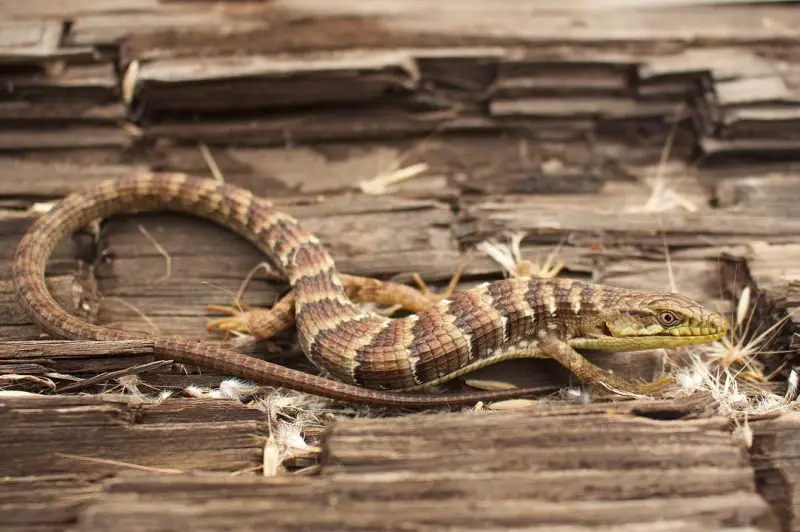
The Southern Alligator Lizard is one of the largest lizards found in the western United States and can also be seen in certain parts of Nevada. Its name comes from its long, powerful body and scales that resemble those of an alligator. Adults can grow up to 12 inches long, with a thick body and a long tail that may be shed as a defense mechanism.
This lizard’s coloration varies from gray to brown with darker crossbands running across the back and tail. The scales are keeled, giving it a rough, armored look. Its head is wedge-shaped, and its jaw is strong enough to deliver a noticeable bite if handled, which makes it more intimidating than many other lizards.
Unlike many desert species, the Southern Alligator Lizard prefers habitats with more vegetation, such as grasslands, woodlands, and areas near streams or rocky slopes. It is also commonly found in suburban gardens and yards, where it hides under logs, rocks, and leaf litter. It is both terrestrial and a capable climber, making it versatile in its choice of shelter.
This lizard has a broad diet, feeding on insects, spiders, slugs, and even small vertebrates like young mice and other lizards. Because of its size and appetite, it plays an important role in controlling pest populations. Its adaptability allows it to survive in different environments, making it one of the more resilient reptile species in the region.
FAQs about Lizards in Nevada
What kinds of lizards live in Nevada?
Nevada is home to a wide range of lizards, from desert dwellers like the Desert Spiny Lizard and Zebra-tailed Lizard to more unique species such as the Gila Monster and Keeled Rock Gecko. In total, there are around 25 different species that can be found across the state, thriving in deserts, rocky areas, sagebrush plains, and even urban environments.
Are there venomous lizards in Nevada?
Yes, the Gila Monster (Heloderma suspectum) is the only venomous lizard found in Nevada. It is a large, slow-moving species with bead-like scales and bright orange and black markings. While venomous, it is generally not aggressive and poses little danger to humans if left undisturbed.
Where is the best place to see lizards in Nevada?
Lizards can be observed in a variety of habitats across Nevada, including desert valleys, rocky outcrops, and sagebrush flats. Popular areas include Red Rock Canyon, Valley of Fire State Park, and desert regions near Las Vegas. Early morning and late afternoon are the best times to spot them basking or hunting.
Do lizards in Nevada hibernate?
Many lizards in Nevada go into a state of brumation during the colder months. This is similar to hibernation, where their activity slows down and they remain hidden in burrows or under rocks until temperatures rise again in spring.
What do Nevada lizards eat?
Most lizards in Nevada are insectivores, feeding on ants, beetles, grasshoppers, spiders, and other small invertebrates. Some larger species, such as the Southern Alligator Lizard, may also eat small vertebrates like baby mice or other lizards. Certain species, like the Desert Iguana, supplement their diet with plants and flowers.

